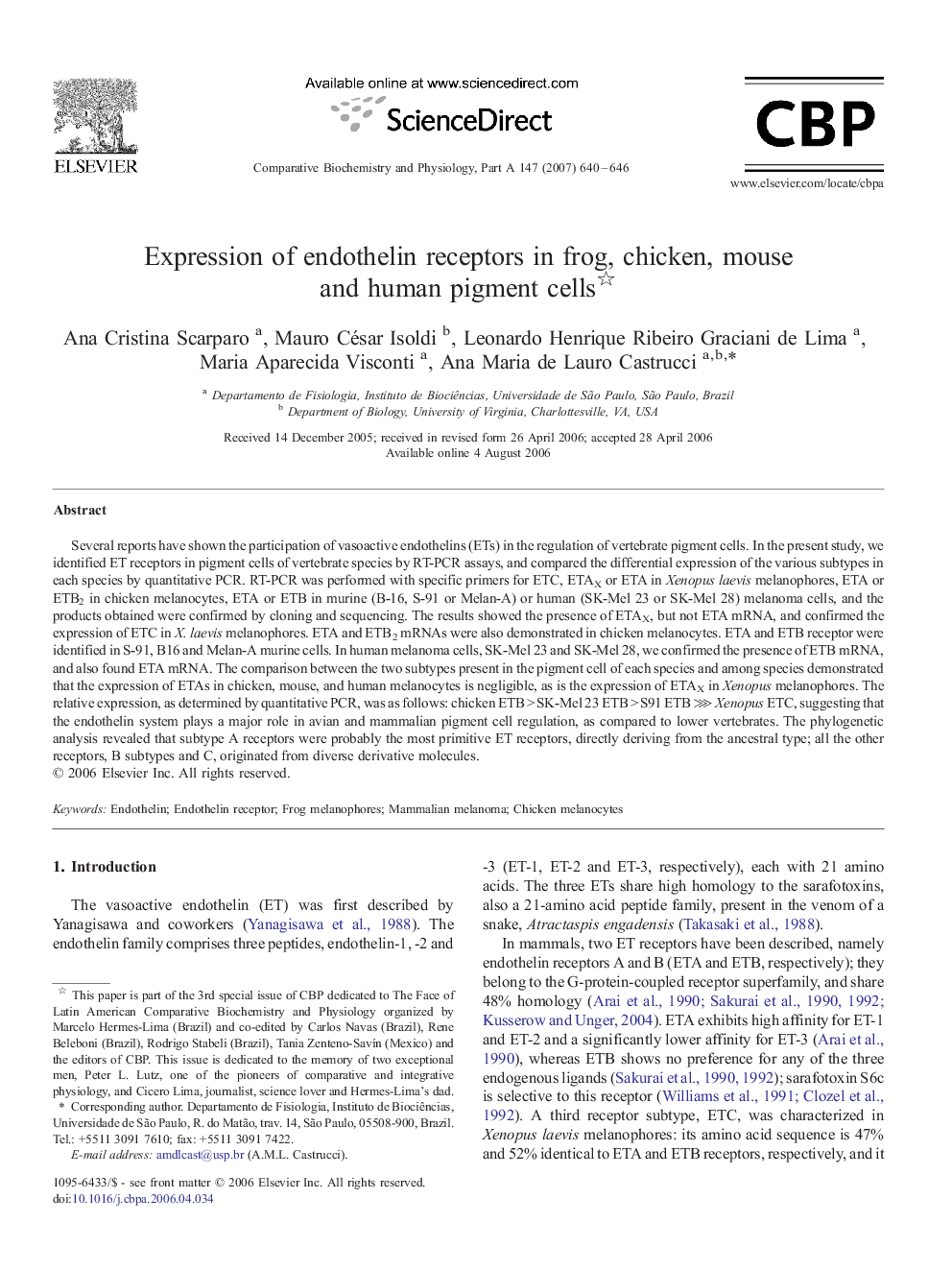| کد مقاله | کد نشریه | سال انتشار | مقاله انگلیسی | نسخه تمام متن |
|---|---|---|---|---|
| 1974339 | 1060350 | 2007 | 7 صفحه PDF | دانلود رایگان |

Several reports have shown the participation of vasoactive endothelins (ETs) in the regulation of vertebrate pigment cells. In the present study, we identified ET receptors in pigment cells of vertebrate species by RT-PCR assays, and compared the differential expression of the various subtypes in each species by quantitative PCR. RT-PCR was performed with specific primers for ETC, ETAX or ETA in Xenopus laevis melanophores, ETA or ETB2 in chicken melanocytes, ETA or ETB in murine (B-16, S-91 or Melan-A) or human (SK-Mel 23 or SK-Mel 28) melanoma cells, and the products obtained were confirmed by cloning and sequencing. The results showed the presence of ETAX, but not ETA mRNA, and confirmed the expression of ETC in X. laevis melanophores. ETA and ETB2 mRNAs were also demonstrated in chicken melanocytes. ETA and ETB receptor were identified in S-91, B16 and Melan-A murine cells. In human melanoma cells, SK-Mel 23 and SK-Mel 28, we confirmed the presence of ETB mRNA, and also found ETA mRNA. The comparison between the two subtypes present in the pigment cell of each species and among species demonstrated that the expression of ETAs in chicken, mouse, and human melanocytes is negligible, as is the expression of ETAX in Xenopus melanophores. The relative expression, as determined by quantitative PCR, was as follows: chicken ETB > SK-Mel 23 ETB > S91 ETB ⋙ Xenopus ETC, suggesting that the endothelin system plays a major role in avian and mammalian pigment cell regulation, as compared to lower vertebrates. The phylogenetic analysis revealed that subtype A receptors were probably the most primitive ET receptors, directly deriving from the ancestral type; all the other receptors, B subtypes and C, originated from diverse derivative molecules.
Journal: Comparative Biochemistry and Physiology Part A: Molecular & Integrative Physiology - Volume 147, Issue 3, July 2007, Pages 640–646